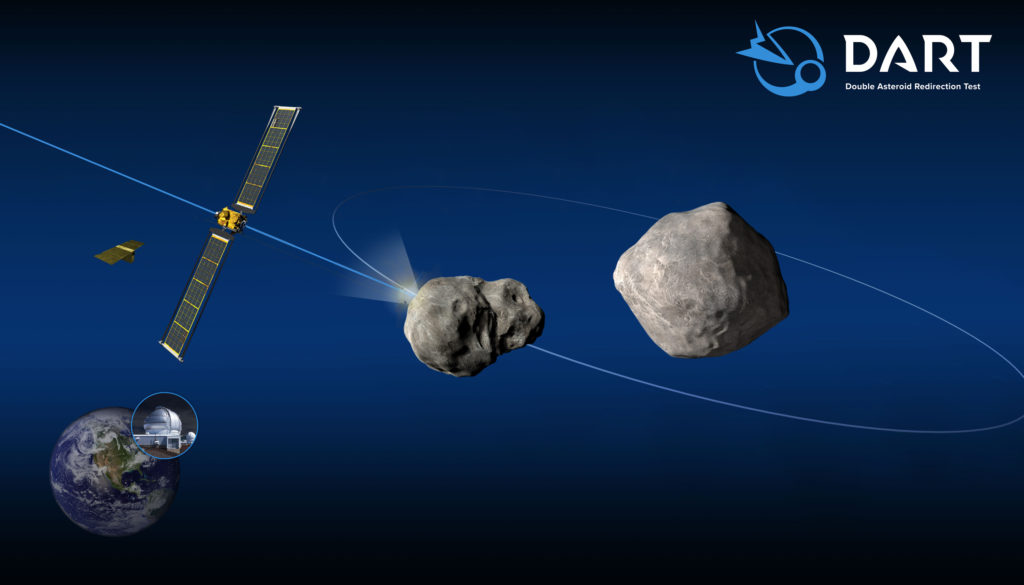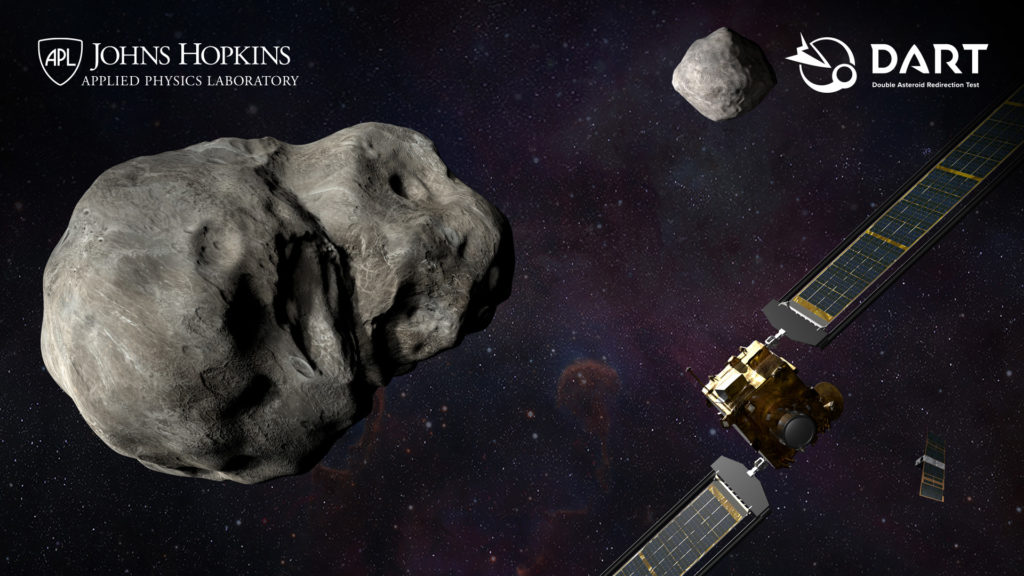
- This event has passed.
This is a free and open to the public hybrid event, held both inperson and online. Due to the newly effective insurance requirements, we regret that we can not allow people under 18 on the Chapman Campus, they are welcome to attend online.
Join Zoom
Throwing DART(s) at Asteroids
NASA’s First Planetary Defense Mission

On September 26, 2022, NASA intentionally smashed the DART spacecraft into an asteroid as humanity’s first test mission for planetary defense. The Double Asteroid Redirection Test (DART) spacecraft’s collision with its target asteroid, which poses no threat to Earth, changed the asteroid’s motion in a way that can be measured using ground-based telescopes, including those of Las Cumbres Observatory.

In this talk, Dr. Tim Lister will describe near-Earth asteroids, impact hazards, and what the DART mission will do to prepare for potentially deflecting asteroids in the future.
Dr Tim Lister joined Las Cumbres Observatory (LCO) as a project scientist in 2007 and is now a Staff Scientist. He specializes in the observation and characterization of small Solar System bodies, particularly comets and Near Earth Asteroids. He received a M. Sci in Astrophysics from the University of St Andrews in 1997 and a Doctorate in Astrophysics on the study of magnetic activity on variable stars in 2000, also from the University of St Andrews. Following his doctorate, he was a founding member of the
SuperWASP transit survey searching for extrasolar planets, specializing in building data processing pipelines for analyzing the survey data, for which he received the RAS Group Achievement Award. Since joining LCO, he has worked on building pipelines and data archives for the observatory, confirming new transiting extrasolar planets and building a new science group for the study of Solar System objects. In the course of this research, he has developed web-based software to allow the scheduling and analysis of observations of Solar System objects using the telescopes of the LCO Network. He is currently Co-lead of the LCO Outbursting Objects Key (LOOK) Project to study the behavior of comets for ESA’s Comet Interceptor mission and a member of NASA’s Double Asteroid Redirection Test (DART) Investigation Team.
Views: 0
